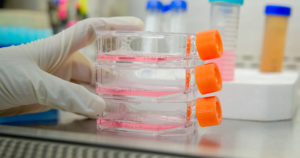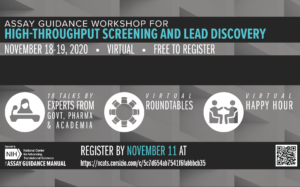
Many cell biology researchers can name their department’s or institutions’s “cell culture wizard”—the technician with 20+ years of experience whose cell cultures are always free from contamination, exhibit reliable doubling rates and show no phenotype or genotype weirdness. Cell culture takes skill and experience. Primary cell culture can be even more difficult still, and many research and pharmaceutical applications require primary cells.
Yet, among the many causes of failure to replicate study results, variability in cell culture stands out (1). Add to the normal challenges of cell culture a pandemic that shut down cell culture facilities and still limits when and how often researchers can monitor their cell culture lines, and the problem of cell culture variability is magnified further.
Treating Cells as Reagents
A good way to reduce variability in cell-based studies is to use the thaw-and-use frozen stock approach. This involves freezing a large batch of “stock” cells, then performing quality control tests to ensure they respond appropriately to treatment. Then whenever you need to perform an assay, just thaw another vial of cells from that batch and begin your assay—just like an assay reagent! This approach eliminates the need to grow your cells to a specific stage, which could take days and introduce more variability.
The biopharmaceutical industry has already moved toward the use of thaw-and-sue frozen cells as one approach to reduce variability (3). Assays that use primary cells are tedious to develop and difficult to interpret, and making genetically modified cellular models with clonal cell lines has been a common practice for many years. To save on costs and resources in maintaining cell lines in culture, banks of frozen thaw-and-use cells are prepared and used in advance of bioassays that are employed to monitor the activity of a substance or biologic over time to ensure consistency.
Advantages of Thaw-and-Use Cells
A logical advance for any research that relies on cultured cells is to consider the cells as critical reagents and provide them manufactured under controlled conditions and QC-tested for performance in much the same way other reagents such as media, supplements and serum are tested. Frozen, thaw-and-use formatted cells that have gone through thorough quality control testing by a manufacturer that specializes in producing the cells yield more consistent response and help minimize variability from assay-to-assay, researcher-to-researcher and even lab-to-lab.
We want you to spend more time making discoveries and less time making tools to support your research. Our Academic Access Program makes it easier to get pre-launch, cutting edge technologies into your research lab that can boost biologic discovery. Learn more today.
Using thaw-and-use cells can also reduce time to results. Cells are thawed and used like any other reagent, rather than cultured and passaged multiple times before use, eliminating inconsistency of cell culture and speeding up the process of study—reducing the time required for assay that requires cultured cells from 1–2 weeks to 24 hours.
The application of thaw-and-use cells reduces the required resources and laboratory space needed for cell culture activities. Not only are costs reduced, but fewer individuals will need to access small cell culture spaces, making physical distancing in the lab a little easier.
Reducing Variability in Cultured Cells
You probably can’t use thaw-and-use cells for everything, but you can still reduce variability in your cell cultures, particularly as you resume your research activity after lockdown. Here are a few tips (1,3):
- Always obtain cells from trusted sources
- Perform routine testing for contamination
- Maintain consistent culture conditions
- Control for changes in cell number
- Use caution when handling cells
- Test to verify cell line identity
- Obtain culture media from a consistent and reliable manufacturer
- Note the lot and source of all serum supplements
References
- Lee. J. (2018) How to Reduce Cell Culture Variability Promega Connections March 23.
- TerWee, J. A. (2011) Increased consistency and efficience in routine potency testing by bioassay with direct use of cryopreserved (ready-to-plate) cells J. Immunol Methods 370: 65–74.
- Arduengo, M. (2012) Considerations for Successful Cell Based Assays II: Cell Culture Conditions Promega Connections January 11.
Interested in learning more about cells as reagents? Terry Riss, PhD, from Promega will be presenting “Treating Cells as Reagents to Design Reproducible Assays” at the Assay Guidance Workshop for High-Throughput Screening and Lead Discovery on Wednesday November 18. Learn more about the workshop and register to attend sessions.


